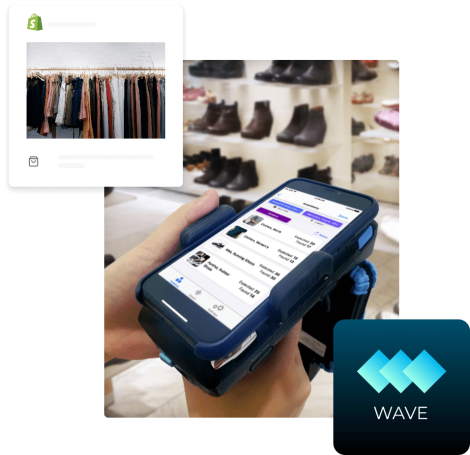Retail Inventory Management and RFID Technology: The Urgency in 2023

RFID technology has had a significant impact on tracking item-level inventory since 2003. Its influence has been so substantial that major businesses and organizations like Walmart, Target, Zara, Nike, and the US Department of Defense have made it mandatory for their suppliers to use RFID tags. As we enter the year 2023, an increasing number of retailers and businesses are looking to adopt this technology. However, many of these companies require assistance in implementing RFID-based inventory tracking and control systems.
RFID in retail inventory
One of the main reasons retailers have been pursuing the idea of RFID inventory management is its efficiency in counting item-level inventory. One store can be scanned in a matter of minutes. Inventory data is now easier to produce; it is accessible through cloud-based solutions, and reconciliation with your POS data has never been easier.
Manual cycle counting and barcode systems are a thing of the past. Many retailers still cling to standard inventory practices and don’t know how much they miss out on not using RFID in their inventory management system.
What are some key elements of inventory management that I may have overlooked?
Speed
Most inventory managers would tell you that there’s always a lot ongoing inside your shelves. It’s only later that they realize that doing cycle counts or barcode counts gets you the data but not efficiently — as soon as it is sent to the system, it is usually out-of-date.
Accuracy
Another thing that you might be wondering is how your competitors can confidently say that they have an accurate inventory. Retailers like Nike, Zara, Crocs, and Lululemon are confident with their inventory counts because they count their lists more frequently than they used to. Continuous daily or weekly inventory counting will provide much data to extrapolate. Thus, making your inventory counts and reconciliation accurate.
Globally accepted retail practices
After the Walmart mandate, numerous manufacturers and retailers adopted the use of numbering schemas like UPC (Universal Product Code) and SGTIN (Serialized Global Trade Item Number). This move has enabled them to conform to the global standard, which is expected to remain relevant for the next decade. However, setting up and implementing such systems independently could take up to five years. If your organization has yet to adopt this practice in 2023, you have much work to do.
Visibility
Even if you’re confident with your manual hand-counting or barcode scanning, inventory visibility is hard to achieve when you only do inventory counts every six months or quarter. Having that visibility expands your ability to use RFID inventory data points.
How can I implement all of these practices in my inventory management?
SimplyRFiD provides a service that helps businesses establish, set up, integrate, and maintain an RFID inventory management system. Our AI Kickstart campaign is an end-to-end service to help you start an accurate inventory.
About SimplyRFiD’s AI Kickstart Program
It is a service that involves getting your products source tagged, implementing a retail rollout protocol, staff training, and integrating your data across your chosen eCommerce/ERP/CRM platform. You need all these to get that accurate inventory count across all your stores into the platform your users use.
Our team and your project leaders will work hand-in-hand in establishing guidelines, methodology, and best practices for all your locations to get that 100% visibility and synchronization.
SimplyRFiD's Accurate Inventory Kickstart is available to retailers with multiple physical locations in the USA or 100+ locations worldwide. Contact our sales team for a scheduled product demo and any other additional information.
